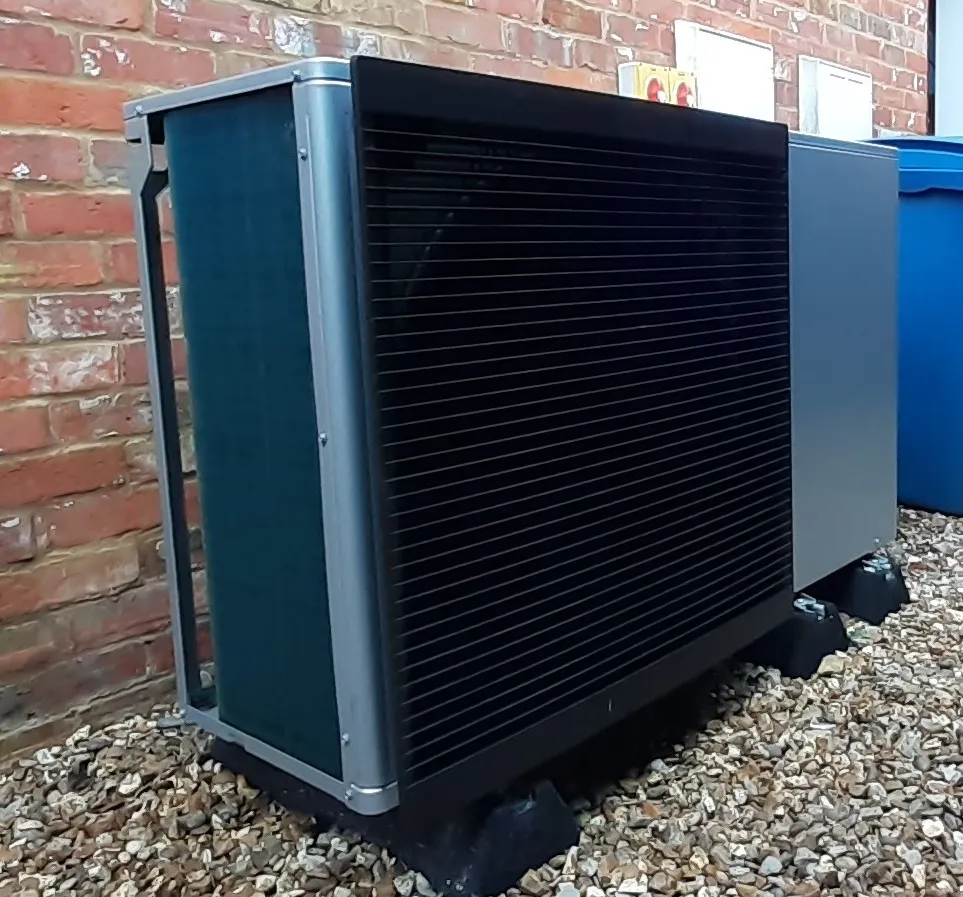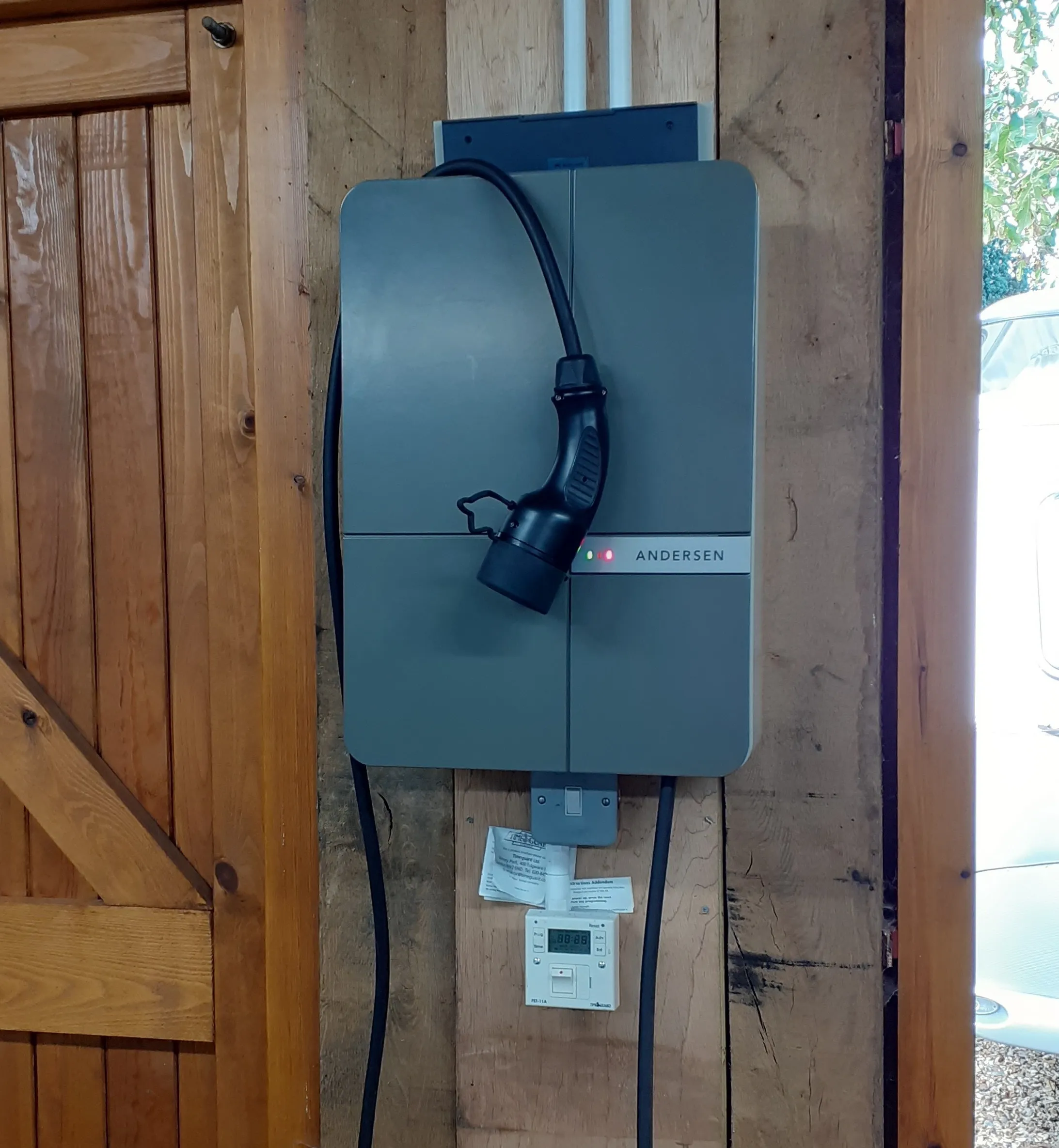
Heat pumps breathe life into vision of low-carbon future
Find out why one Hart resident has opted for a heat pump at their North Warnborough home

Angela McFarlane and Bryan Berry of North Warnborough can confirm that heat pumps do work. Their air-source heat pump was installed in November 2022 and kept them warm during the cold winter that followed.
“The pump normally heats water to 48°C, which is more than hot enough for heating and washing,” says Bryan. “Once a week it heats to over 60°C to purge any bacteria that may have entered the system.”
The house was built in 2011 so only a few minor upgrades were needed to prepare for the installation. The main change was to replace the old single-coil hot water tank with a twin-coil model. This extracts full benefit from the heat generated by the pump and also taps any spare energy from their solar panels.
By experimenting with the settings, Angela and Bryan worked out the most cost-effective way to use the heat pump.
It’s important to schedule on and off times carefully so heat can build up gradually. For example, the underfloor heating has to warm up over a long period so it can release heat at the right time. It’s no good turning it on in the morning and expecting to feel the benefit immediately.
To future-proof against hotter summers predicted to come, Angela and Bryan had air conditioning units installed with the heat pump. It’s not widely understood that air-source heat pumps can also operate air conditioning dual units. This works by reversing the process and transferring warm air from inside your house to outside.
They have 14 solar panels on their garage roof. These provide electricity during daylight to run household appliances, heat water and charge their solar batteries.
They’re seeing better than expected performance from the panels, even in winter. Angela says: “Don’t be put off if you’ve heard solar panels perform poorly in low light. The latest photovoltaic cells are much more efficient than older ones.”
The newest addition is a charging point in the garage for their electric vehicle.
This charges from the solar panels, but also from the national grid when needed. A cheap overnight tariff from energy supplier E.ON means it is often cost-effective to charge the vehicle’s battery in the early hours. They also use the tariff to top up their solar batteries overnight.
They drive a second-hand VW I.d3 with a range of about 260 miles when fully charged. The savings compared with their second vehicle, a diesel car, are striking. It costs about £5 to drive 200 miles in the VW but about £50 in the diesel.
Angela and Bryan say they are lucky because they could afford to have these sustainable systems installed in the space of a few months. They also acknowledge their 12-year-old house needed few adaptations. And they were fortunate to have the time to navigate the complicated maze of grants, suppliers and permissions needed to get the work done.
But their installations do clearly prove that sustainable energy and heating systems are a workable and cost-effective alternative to fossil fuels – particularly when efficiently integrated.
“We’ve done it for environmental reasons, not to get a return on the investment,” says Angela, “but it turns out there are potential running cost savings in the long term.”
In future, they want to explore the possibility of drawing power from their electric vehicle’s battery when it’s idle in the garage. At 58kW, it has almost 20 times the capacity of one of their solar batteries so it would make sense to tap it when they’re not using the car. This includes the possibility of selling more electricity back to the national grid.
The couple have already halved their home's carbon footprint. They're open to anything that might reduce it further, but they’ve clearly made a great start.
Angela and Bryan’s sustainable energy system at a glance:
-
air-source heat pump
-
14 solar panels
-
three x 3kW solar batteries
-
twin-coil hot water tank
-
air conditioning units
-
underfloor heating (installed when house was built)
-
electric vehicle charging point
They also recommend:
-
cheap overnight electricity tariff from E.ON for EV owners
-
Loop Energy app to get more from your smart meter


